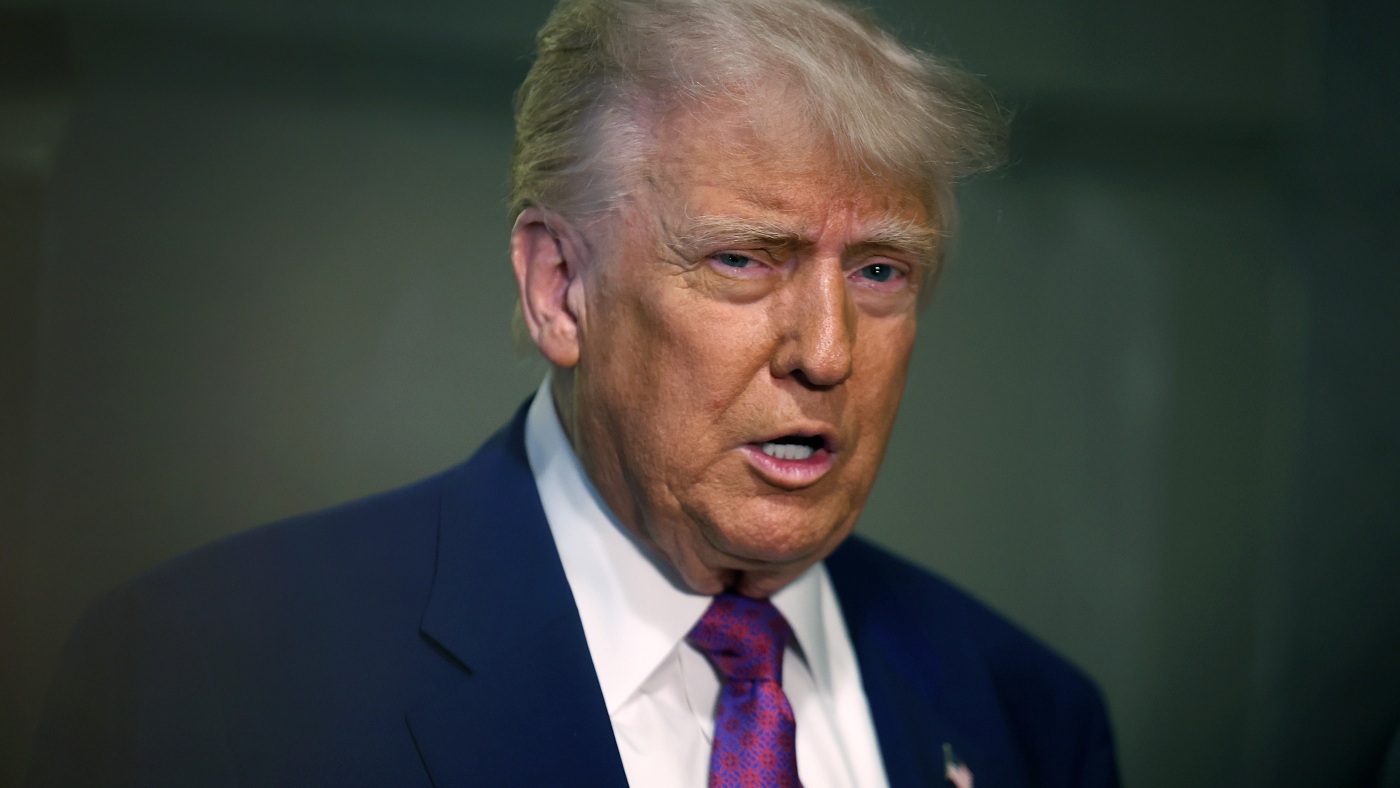It only took a few days for things to start going missing on US government websites once Trump began his second term.
In a blizzard of change, federal agencies have struggled to comply with the barrage of executive orders signed by Trump since Day 1. Environmental policies have been rolled back, entire government departments and bureaus dismantled, and decades-long diversity, equity and inclusion (DEI) initiatives were abruptly ended.
Read moreTrump's USAID shutdown halts life-saving programmes, threatens global security
Thousands of websites have disappeared or been modified as a consequence. Scientific articles, the precious results of long-term research, data sets and digital tools have been deleted.
Trump’s executive order that falsely claims there are only two genders is now reflected on the Centers for Disease Control and Prevention (CDC) website. Pages that previously referred to "pregnant people", for example, now refer to "pregnant women".
The first nationwide database tracking federal police misconduct has been impossible to access since late February. And tools tracking climate risks and environmental justice concerns have been scrubbed. Hundreds of employees of the National Oceanic and Atmospheric Administration (NOAA) were fired, and looming funding cuts could eviscerate what many consider the world’s most advanced climate modeling and forecasting systems.
But just as quickly as government data falls victim to Trump's policies, digital archivists, scientists, researchers and citizens swiftly salvage it from the digital grave.
The race to save data from oblivion
“When it all began, [I worked] every morning and every night,” says Lynda Kellam, a data librarian and organiser with the Data Rescue Project, a platform that coordinates efforts between different projects saving public government data. “I used to be able to step away from my computer on the weekend, but now it has been a lot harder not to use the evenings to just check in and see what’s happening,” Kellam admits.
Though it is difficult to predict when the next chunk of government data will be flagged as doomed to disappear, prompting Kellam to jump in with hundreds of other volunteers to save it from oblivion, specific topics are more vulnerable than others. “Direct targets include data with sexual orientation and gender identification variables,” Kellam explains.
Federal agencies have flagged hundreds of words to limit or avoid, which news outlets like the New York Times and free expression non-profits like PEN America compiled into long lists. Some research or data sets have been scrapped simply because they used words like “transgender”. In some cases, photos were flagged for removal simply because their file name included “gay” – like an image of the Enola Gay aircraft that dropped the first atomic bomb on Hiroshima. The White House later responded and said it did not have a list of banned words.
To display this content from YouTube, you must enable advertisement tracking and audience measurement.
One of your browser extensions seems to be blocking the video player from loading. To watch this content, you may need to disable it on this site.

12:54
This is not the first time Kellam has participated in efforts to rescue digital data under Trump. She worked with a group called Data Refuge in 2017, but says the scope of deletions is on an unprecedented scale this time around. “There were data rescue efforts [back then] but the data wasn’t disappearing,” Kellam explains. “[And] the focus was on environmental and climate change data. Now it’s a whole breadth of government data, it’s a much wider net, especially when it comes to what I call ‘social’ data, meaning data that involves humans and that doesn’t fit within the ideology of the administration.”
“We definitely haven’t seen anything like the pace that we are seeing data disappear now,” she adds.
The Data Rescue Project is just one of many organisations engaged in activities to save government resources from oblivion. Other non-profits like the Internet Archive and its Wayback Machine, a tool that captures screenshots of web pages and caches government data, are also playing an essential role.
And data rescue efforts are even taking place beyond US borders.
An international effort
“It was clear things were going to happen [and they] would be much worse than the first presidency when Trump won the election in November,” says Henrik Schoenemann, a digital historian at Humboldt University in Berlin. He started Safeguarding Research & Culture, an independent organisation that archives public data, five days before Trump was inaugurated on January 20.
Schoenemann put out a call on decentralized social media platforms like Mastodon asking if researchers needed their data to be hosted or backed up elsewhere than on US institutional or agency websites. Along with a colleague, he started archiving research papers they knew would be targeted by the Trump administration, like articles using LGBTQ terminology like “non-binary” or “transgender”. Then, they quickly moved on to bigger fish.
“Just a few days before the CDC went offline, we archived the whole website and its data sets,” Schoenemann said. “We started out by proactively thinking about what kind of data would be in danger.”
Before data is archived, the organisation either receives a request or picks up on a specific area that is at risk of disappearing – after an executive order is signed by Trump, for example. Volunteers then download data sets or archive websites that could be taken down and back the information up on hard drives. The data is then added to a public catalogue online where the information is shared using a torrent system – a safer way to transfer files online.
“It’s not just happening to health or climate data, it’s happening to cultural heritage, too,” explains Schoenemann.
Trump issued an executive order on March 27 directing Vice President JD Vance to “remove improper ideology” from the Smithsonian Institution, including its celebrated museums, research centres and the National Zoo.
“The US is a major hub for research infrastructure, a lot of which is in danger right now,” Schoenemann says. “Having one big institution taking care of [data] infrastructures is a model that doesn’t work anymore.”
A ‘historical precedent’
Data experts say it is too early to tell the exact percentage of what has been taken down since Trump took office. But looking back at the kind of content that has been deleted in the first 100 days of his presidency draws a clear picture of the agenda the Trump administration is pursuing.
“The intent behind the deletions is either based on ideological differences or it is about so-called efficiency,” says Kellam.
The vast overhaul of US government agencies was spearheaded by Tesla CEO Elon Musk and his self-described Department of Government Efficiency, known as DOGE. Within weeks of Trump taking office, the department dissolved USAID – the country’s main foreign aid organisation. It also tried to shut down the Consumer Financial Protection Bureau, a watchdog agency that protects US citizens from bank malpractice. And now the Department of Education is at risk of being dismantled.
Read moreWhat parallels do historians see between the Trump administration and the Nazi regime?
“I think the intention is to control how people think or feel, but also demonise others,” says Schoenemann. “There is a historical precedent for autocratic regimes changing what they want people to know, or changing reality according to their point of view … The end goal is controlling the population.”
He cites the Berlin Institute of Sexual Science, founded in 1919, as an example.
“There is a reason why transgender studies seem so recent,” he says. The institute could have been a bedrock for trans research were its library not set on fire by the Nazi party on May 10, 1933. It lies just a three-minute walk from where Schoenemann works.
“People have already tried to erase research [in the past]. We want to make sure that won’t happen again.”
How data shape policies
When it comes to climate and environmental data, scientists are worried that efforts to gather new data will fall by the wayside. The NOAA announced mid-April that a list of datasets on ocean monitoring will go dark in early May. And an observatory in Hawaii that has been tracking atmospheric greenhouse gases since 1958 is on a list of facilities whose leases may be cancelled following mass cuts by Trump.
“By removing access to information, the Trump administration is able to tell whatever narrative they want about the quality of their policies,” says Jessie Mahr, the technology director at the Environmental Policy Innovation Center.
Mahr is part of a project that archives hundreds of sets of environmental data and is simultaneously trying to recreate tools needed to make sense of that data. The Public Environmental Data Project also do advocacy work to raise people’s awareness on the importance of the data being deleted.
Before the Trump administration removed access to a screening tool on the Environmental Protection Agency’s website that mapped environmental hazards in different areas across the US, “people could check whether the drinking water in their neighbourhood was safe, what the flood risks were but also see if there was sewage in the area”, Mahr explains.
“By removing access to [this data], you are not only making it hard for the public to understand, but also for governments to take action and prioritise where they should be investing to improve livelihoods,” she says.
Public governmental data also allows communities to use numbers and statistics to bolster their complaints about environmental hazards like pollution. State and federal agencies can then confirm “how bad things are and direct resources to address the issue”, Mahr says.
“That’s what actually sparks change.”
But for now, there is no sign of the Trump administration letting up. The digital archivists, researchers, scientists and everyday citizens banding together to save the data that is threatened will have to keep up the effort.
Schoenemann believes there is a lot to be learned from what is taking place in the US at the moment. “In Europe, we need to think about how we can prevent the need for rescue operations too,” he says.
“We can’t save people, but at least we can save data.”











 English (US) ·
English (US) ·